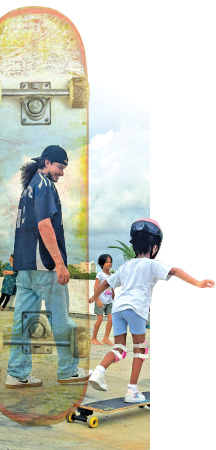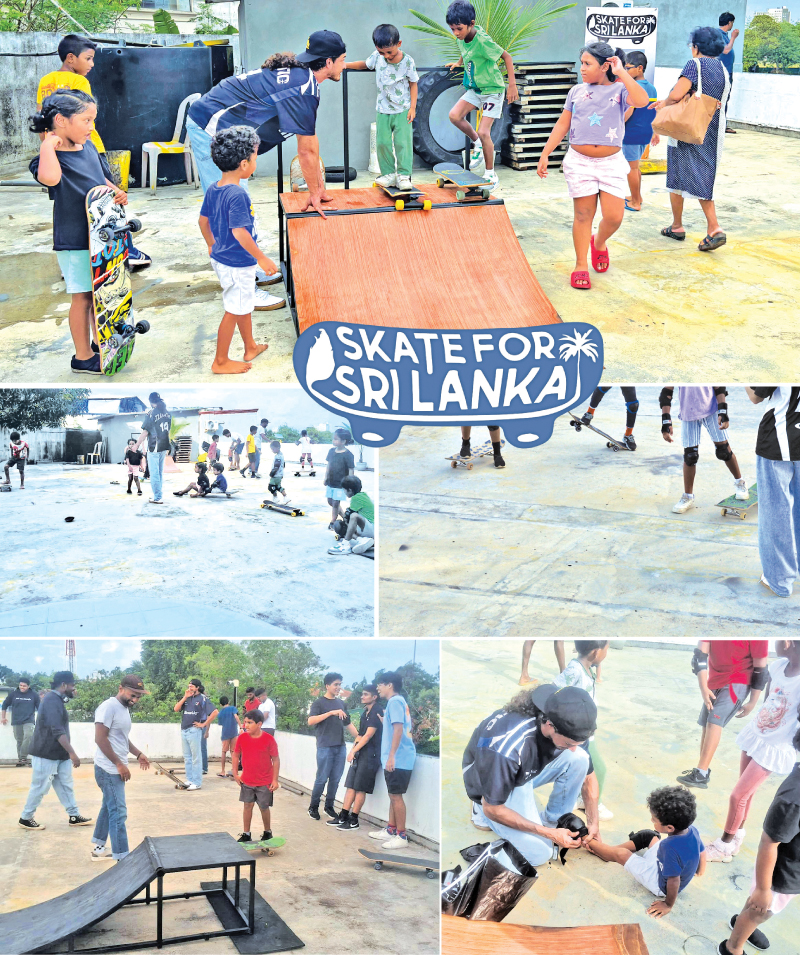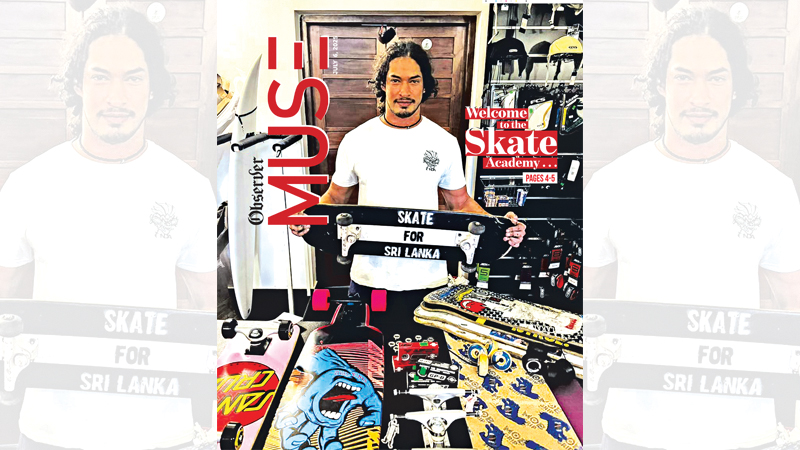 Skating and Sri Lanka have a complicated relationship. From the SK8ELEV8 in the Hills of Kandy to the Yard in Matara, We at Observer MUSE, and our earlier incarnation as Observer Youth, have touched a bit about skateboarding in the island.
Skating and Sri Lanka have a complicated relationship. From the SK8ELEV8 in the Hills of Kandy to the Yard in Matara, We at Observer MUSE, and our earlier incarnation as Observer Youth, have touched a bit about skateboarding in the island.
Manu Dharmaraja is a skater when he gets time off modelling for Sri Lanka’s biggest fashion brands. He is also the founder of Skate for Sri Lanka – a non-profit promoting skateboarding in the island. After about a year’s hiatus Manu made a comeback in June opening a skate park in the rooftop of Rainbow Swimming Academy in Maitland Place, Colombo 7.
Called the Skate Academy, the skate park is equipped with small ramps that Manu himself funded and built from scratch, with some skateboards and protective gear by generous donors.
Manu partnered up with former Olympian Julian Bolling recently to take Skate for Sri Lanka to the next level. Skate Academy is skate park that offers skating classes to all ages. “It’s a child friendly place,” he said while adding that skating can teach leadership and life skills to children and that a skate park can create a space for creatives and for self expression.
More than a sport
 “Skateboarding is still not an ‘established’ sport like cricket or football,” he says. But that in itself is why skateboarding in Sri Lanka is a beautiful thing because, as Manu puts it, the sport can be defined on our own terms.
“Skateboarding is still not an ‘established’ sport like cricket or football,” he says. But that in itself is why skateboarding in Sri Lanka is a beautiful thing because, as Manu puts it, the sport can be defined on our own terms.
Skateboarding had been associated with juvenile delinquency and the older generation in Sri Lanka couldn’t make heads and tails of it. We’ve heard how skaters have been thrown out of public places because the activity has been seen as a hazard or nuisance. MUSE recently learned that a group from SK8ELEV8 was harassed by security to vacate the bike path at Port City. “It’s absurd, if bikes can use the path, why can’t skaters?” they questioned.
Sri Lanka seemed to have missed the memo that skateboarding has shed its rebel image globally, even establishing itself as an Olympic sport. Manu said that he dreams of coaching the future skateboarding athletes from Sri Lanka.
Going commercial
The reason why he chose a commercial venture was because what a non-profit can do is severely limited. Sri Lanka has no direct access to services such as PayPal and receiving funding is a hassle, according to Manu.
“We are looking to build multiple skate parks and a dedicated academy,” he said.
Skateboarding charities have also played a big role in bringing the activity to the global south. Founded in Afghanistan in 2007, Skateistan built parks in Afghanistan, Cambodia and South Africa which greatly empowered the local youth. We don’t even need to look further.
Recently a group from Germany representing Skate Aid built a half-pipe. “They just showed up and built a skating facility for the community,” Manu said.
Skate programs in at-risk communities have actually decreased drug use and improved the well-being among local youth. Manu also cited a recent example of a skatepark built under an overpass in Portland, USA that was shut down by the city for not having proper permits. “They had to open it up again because the level of drug use among the youth actually went up after the park was closed”.
Growing the space, one ramp at a time
 Although the space on the rooftop is quite limited, Manu sees enormous potential. A mural is in the works and Manu plans to build more ramps as the academy grows. “The Skate Academy will be a catalyst for skating in Sri Lanka because it’s mainly for kids, but everyone is welcome to rent equipment and skate there,” he said and also expressed open to collaboration.
Although the space on the rooftop is quite limited, Manu sees enormous potential. A mural is in the works and Manu plans to build more ramps as the academy grows. “The Skate Academy will be a catalyst for skating in Sri Lanka because it’s mainly for kids, but everyone is welcome to rent equipment and skate there,” he said and also expressed open to collaboration.
“A fundraiser party sounds nice,” he told us. There are some old sofas that Manu wants to refurbish to create a little hangout for skaters and creative types as well.
In the meantime, Manu is also concerned about the cost of skating equipment. A decent skateboard doesn’t come cheap. A ‘Creature’ or ‘Santa Cruz’ skateboard is upward of 50,000 and it gets more expensive for longboards and carving boards which are other forms of skateboarding.
Ten years ago Manu was the brand ambassador for Push Skateboards – a local company which built affordable skateboard decks out of bamboo which is sturdier than the maple varieties from the States. He is looking to import skateboards from Asia as the regional skateboarding scene is booming and producing excellent equipment.
Going forward, Manu’s venture will concentrate in the urban areas because cities are very hard to skate in Sri Lanka. He is also being approached by schools who are interested in starting after school skate programs.
Skate for Sri Lanka’s ultimate vision is to build dedicated skateparks in Sri Lanka. Manu also believes that building parks will also open spaces for other extreme sports like rollerblading, scooters and BMX. “I have to take time off the gym to focus on the park now,” he says with a laugh.
From the rooftop ramps of Colombo to dreams of national-scale skateparks, Manu Dharmaraja is rolling ahead with a mission: to redefine skateboarding in Sri Lanka not merely as a sport, but as a movement. His work with Skate for Sri Lanka and the newly launched Skate Academy offers a blueprint for how passion, creativity, and community can reshape how a nation views alternative sports. Whether through teaching children balance and confidence, or collaborating with artists and activists, Manu envisions a future where skating carves out a lasting space in the island’s urban and cultural landscape.
In a country still catching up to the global evolution of skateboarding, this may be the beginning of a much-needed shift — one led by those willing to build their own ramps, plant their own flags, and ride on their own terms.








